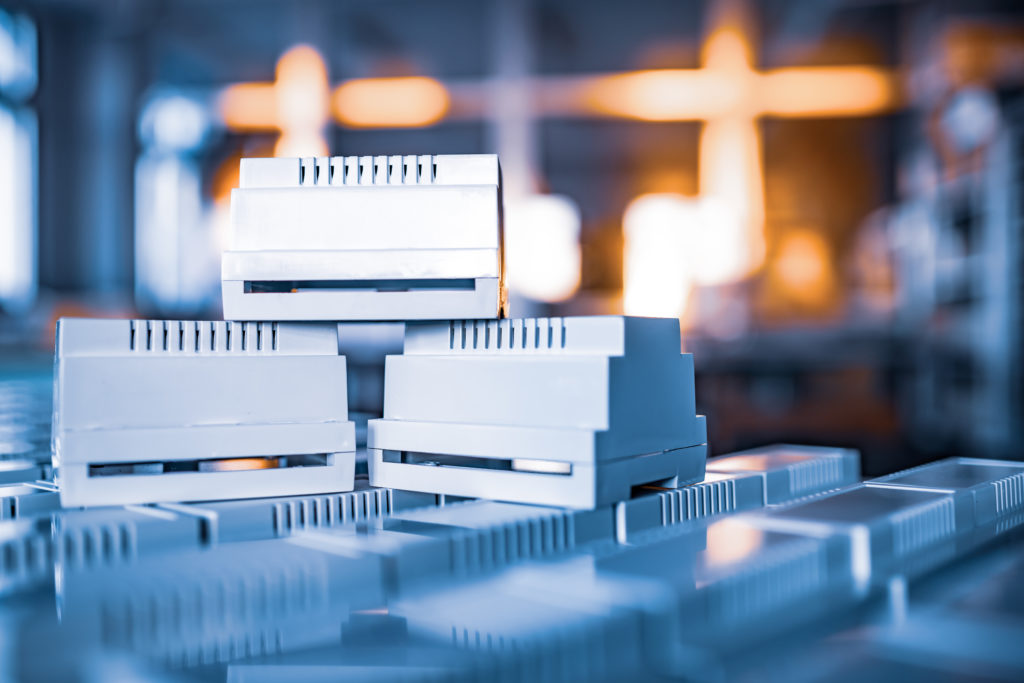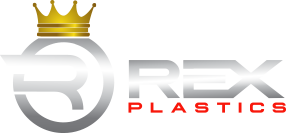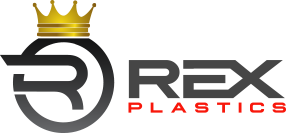- BY nwmcadmin
- POSTED IN American Manufacturing, Product Development, prototyping
- WITH 0 COMMENTS
- PERMALINK
- STANDARD POST TYPE

Understanding Mass Production
Mass production is the backbone of modern manufacturing, enabling companies to produce large quantities of products efficiently and cost-effectively. This production method involves the use of standardized processes and assembly line techniques to create identical items on a large scale. By using mass production systems, manufacturers can meet high demand, reduce labor costs, and maintain consistent quality across all units.
Modern mass production has been transformed by technological innovations such as robotics, artificial intelligence, and 3D printing. These advancements have made production processes more streamlined and cost-effective, enhancing efficiency and reducing waste.
In the manufacturing industry, mass production is essential for creating products that are both affordable and reliable. It allows companies to optimize their production processes, minimize waste, and ensure that each product meets stringent quality standards. Whether it’s through plastic injection molding, blow molding, or other techniques, mass production is a key driver of innovation and economic growth.
What is Mass Production?
Mass production is a manufacturing process that involves producing large quantities of identical products using a highly efficient and repetitive process. Also known as flow production or repetitive flow production, this method is designed to drive down costs and increase efficiency. By employing a specialized division of labor and automated processes, manufacturers can produce large quantities of products quickly and consistently.
In essence, mass production leverages standardized procedures and assembly line techniques to create uniform products on a grand scale. This approach not only meets high market demand but also ensures that each product maintains the same level of quality. The efficiency gained through mass production allows companies to offer their products at competitive prices, making them more accessible to a broader audience.
The Mass Production Process
The mass production process is a complex sequence of stages that transforms raw materials into finished products. This process includes several critical steps: design and development, production planning, procurement of raw materials, division of labor, mechanization and automation, quality control, assembly, testing, packaging, and shipping.
Each stage plays a vital role in ensuring that the final product is produced efficiently, cost-effectively, and to the highest quality standards. By meticulously planning and executing each phase, manufacturers can streamline their operations, minimize waste, and deliver products that meet market expectations.
Design and Development
The design and development stage is the cornerstone of the mass production process. It begins with conceptualizing the product and creating a detailed 3D CAD model. This model serves as a blueprint, allowing designers to visualize the product and make necessary adjustments before moving forward.
Prototyping follows, where physical models of the product are created to test functionality, aesthetics, and durability. This stage is crucial for identifying any potential issues and ensuring that the product meets all required specifications. Market testing is also conducted to gather feedback and make further refinements. By the end of this stage, the product is ready for mass production, with a clear design that is both feasible and optimized for large-scale manufacturing.
Production Planning
Production planning is the strategic phase where the groundwork for efficient manufacturing is laid out. This stage involves creating a detailed production schedule, allocating resources, and assigning tasks to workers. Effective production planning ensures that every aspect of the production process is organized and that all necessary materials and equipment are available when needed.
By meticulously planning each step, manufacturers can avoid bottlenecks and delays, ensuring that the production process runs smoothly. This stage also involves setting timelines and budgets, which are critical for keeping the project on track and within financial constraints. Proper production planning is essential for meeting deadlines, maintaining quality, and achieving cost-efficiency in mass production.
What are some examples of mass production?
Mass production is what takes a garage invention and puts it on shelves around the world. It is the process by which products are replicated at scale. It allows you to turn a dream into a business and a passion into a successful product. Almost everything you see in a shop, hardware store, or online market is a product of mass production.
Mass Production of Plastic
Mass production requires mass materials. Precision machining equipment plays a crucial role in achieving efficient manufacturing processes, enabling the production of uniform products at a low cost and with minimal workforce. In modern times, the material most used at home to create large-scale production is and has long been plastics. Acquiring raw materials in bulk is essential for cost efficiency and ensuring that the stored raw materials adhere to quality standards for large-scale manufacturing.
Mass production processes offer significant advantages such as cost efficiency and uniformity, but they also come with high upfront costs and the potential need for revisions due to errors or regulatory changes. Manufacturers are increasingly integrating advancements like 3D printing into these processes.
Plastics provide an incredible array of benefits and advantages to your product. From price to flexibility, efficiency to durability, plastics are the clear choice for manufacturers across the globe.
Different Plastic Manufacturing Processes & Mass Production Techniques
Plastic Injection Molding in Mass Production
Plastic injection molding is a cornerstone of the manufacturing industry, renowned for its ability to produce large quantities of identical parts with exceptional precision. The process is highly efficient, allowing manufacturers to create complex designs with minimal waste. You can read more about plastic injection molding here.
One of the primary advantages of plastic injection molding is its cost-effectiveness. By automating the production process, companies can significantly reduce labor costs while maintaining high production rates. This method is ideal for producing everything from small components to large, intricate parts, making it a versatile choice for various industries. The ability to produce large quantities of parts quickly and accurately ensures that manufacturers can meet market demand without compromising on quality.
Blow Molding
Blow molding creates thin-walled, hollow products, such as bottles and jugs. Molten plastic is inflated, much like a balloon, inside a metal mold. As the plastic expands, it takes on the shape of the mold, resulting in a precise and uniform product. It is then rapidly cooled and ejected from the mold. It’s another essential mass production technique.

Production lines facilitate the continuous flow of standardized products through assembly lines, ensuring efficiency and consistency in mass production. This method is highly efficient for producing large quantities of identical items, making it a popular choice for the packaging industry.
Blow molding is not only cost-effective but also allows for the creation of complex shapes and designs that would be difficult to achieve with other techniques. The ability to produce high volumes of products with consistent quality makes blow molding an invaluable tool in the realm of mass production.
Advantages of Mass Production
Mass production offers a multitude of benefits that can transform a business’s manufacturing capabilities and market competitiveness. Here are some of the key advantages:
- Increased Efficiency: By standardizing production processes and utilizing assembly line techniques, mass production allows for the rapid creation of large quantities of identical parts. This efficiency reduces production time and ensures that products are highly precise and accurate. The assembly line technique, introduced by Henry Ford in 1913, revolutionized mass production by drastically reducing production times and costs, making products like the Ford Model T affordable to the general public.
- Reduced Labor Costs: Mass production techniques minimize the need for skilled labor by automating many aspects of the production process. This reduction in labor costs allows companies to allocate resources more effectively and invest in other areas of the business.
- Improved Quality Control: Implementing quality control measures is easier in a mass production system. Regular inspections and testing ensure that each product meets specific standards, leading to higher overall quality and fewer defects.
- Increased Productivity: Specialization is a hallmark of mass production. Workers focus on specific tasks, which increases their efficiency and speed. This specialization, combined with the use of assembly lines, boosts overall productivity.
- Reduced Production Time: Techniques like plastic injection molding and blow molding allow for the rapid production of large quantities of parts. This speed is crucial for meeting market demand and staying competitive.
- Increased Customer Satisfaction: Producing high-quality products at a lower cost translates to better value for customers. Satisfied customers are more likely to remain loyal and recommend the product to others.
- Competitive Advantage: Companies that master mass production techniques can produce high-quality products more efficiently and at a lower cost than their competitors. This advantage can lead to increased market share and higher revenue.
5 Steps to Mass Producing Your Plastic Product Using Injection Molding & Quality Control
Step 1: Concept
Have a clear understanding of what your product is and what purpose it will serve. This stage requires you to perform your due diligence, ensuring that there is a market for your product and that you understand the risks and costs associated with creating a new product. However, it’s important to consider the disadvantages of mass production, such as the complexities and significant investments required in establishing automated assembly lines.
Modern mass production leverages technological advancements like robotics, artificial intelligence, and 3D printing to enhance production efficiency, transforming traditional methods into more streamlined and cost-effective processes.
Step 2: Modeling
So you’ve thought of a fantastic new product. You even wrote a business plan. Now, it’s time to create the design that will serve as a blueprint for your future product. A computer-assisted design, or CAD, is a three-dimensional model of your product that will allow you to finalize your design, spot problem areas, and begin the production process.
Step 3: Prototyping
The CAD is essential, but you’ll need to create some prototypes to be genuinely prepared for mass production. Bringing your design into the real world will allow you to check for structural stability, physical appearance, functionality, and a whole host of other things that a digital design can’t provide.
Step 4: Testing
Create a limited run of your product before launching into full-blown production. This will allow you to gauge the effectiveness of your creation further while giving you valuable feedback. Your initial production run lets you test key performance indicators while limiting risk in the long run.
Step 5: Mass Production
All of your hard work culminates in this. After testing, you’ll have a more accurate idea of the kind of production run you’ll need to meet your needs, as well as any assembly or finishing your product requires. At this point, you can be more confident in moving forward with your investment, as you’ve already seen how your product does in the real world.
How Rex Plastics Can Help You Go from Prototype to Mass Production
Mass production can be a frightening experience. With a partner like Rex Plastics on your side, you can rest easily knowing that your project is in good hands. Rex Plastics’ decades of experience make us the trusted choice for all your plastic production needs. So if you have questions about mass production or plastic injection molding, don’t hesitate, drop us a line today.
Frequently Asked Questions
| Question | Answer |
|---|---|
| 1. How do I protect my product design from being copied during the mass production process? | To protect your design, consider filing for a design patent, using Non-Disclosure Agreements (NDAs), including specific clauses in manufacturing contracts, and monitoring the market for infringements. |
| 2. What are the environmental considerations of mass production, and how can I make my process more sustainable? | Choose eco-friendly materials, implement waste reduction strategies, use energy-efficient machinery, establish recycling programs, and conduct lifecycle assessments to minimize environmental impact. |
| 3. How do I handle quality control issues that arise during a large-scale production run? What is an acceptable defect rate? | Establish Acceptable Quality Limits (AQL), conduct in-process inspections, perform root cause analysis for defects, maintain detailed records, and ensure clear communication between quality control and manufacturing teams. |
| 4. What are the key considerations for scaling up production from a small batch to mass production quantities? | Ensure equipment capacity, secure raw material supply, train the workforce, develop a logistics plan, and secure necessary financing to support increased production costs. Read more about scaling up to production costs here. |
| 5. How can I use data analytics to optimize my mass production process? | Collect data on production metrics, use Statistical Process Control (SPC), implement predictive maintenance, optimize processes based on data insights, and optimize your supply chain to reduce costs. |


